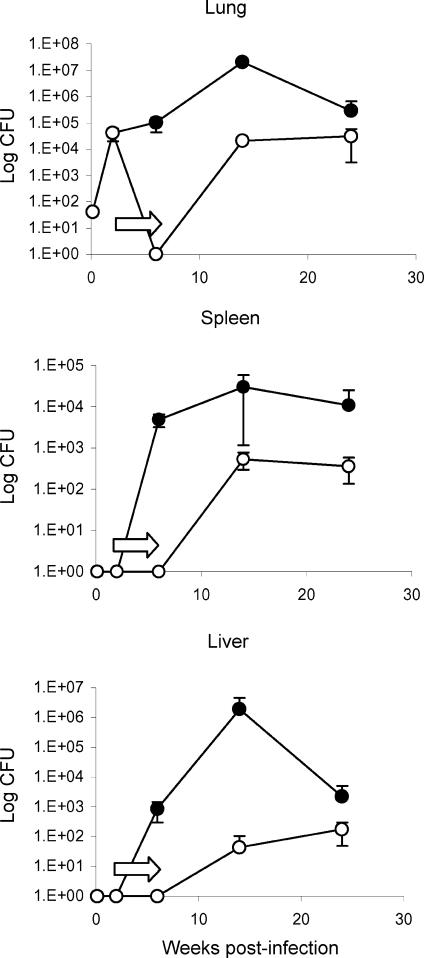Figure 2.
Model A. Bacterial burden of C57BL/6 mice treated with rifampicin and isoniazid (RMP-INH) for 4 weeks after aerogenic infection with 30 colony-forming units (CFU) of Mycobacterium tuberculosis H37Rv. Two weeks postinfection, one group of mice (○) received 0·1 g/l RMP-INH, delivered in drinking water ad libitum (indicated by arrows) for a period of 4 weeks, whereas infected control mice (•) received plain drinking water ad libitum. At specific time-intervals up to 24 weeks postinfection, the number of viable bacilli were determined in the lung, spleen and liver by plating organ homogenates and enumerating CFU. No viable bacilli were detected in organs of mice upon cessation of anti-tuberculous therapy; however, mice spontaneously reactivated and bacilli were cultured 8 weeks later (open circles). Both infected controls and reactivated mice controlled the infection (100% survival). Results are expressed as means ± SEM and are representative of three independent experiments with three to four mice per group per time-point.

